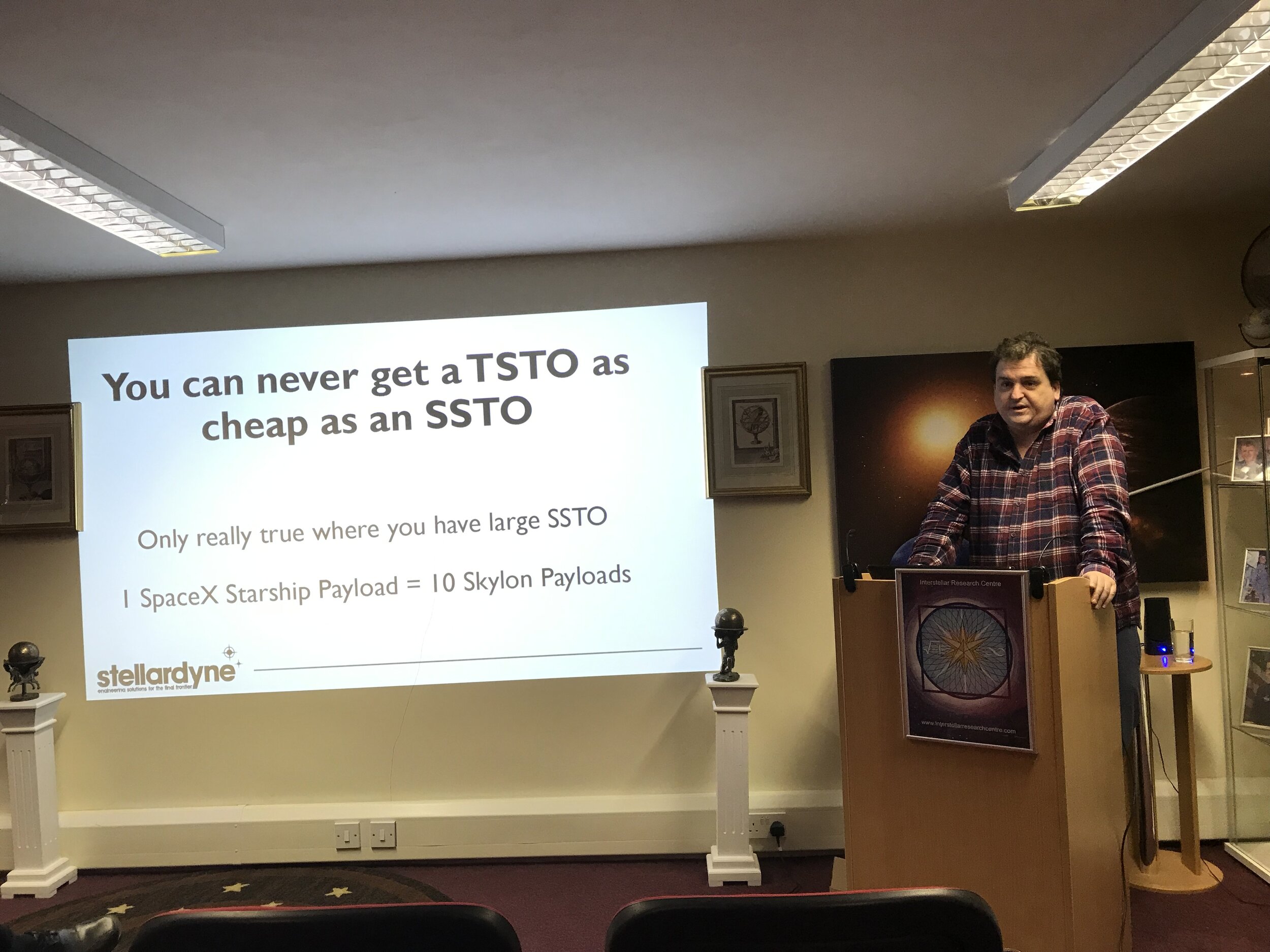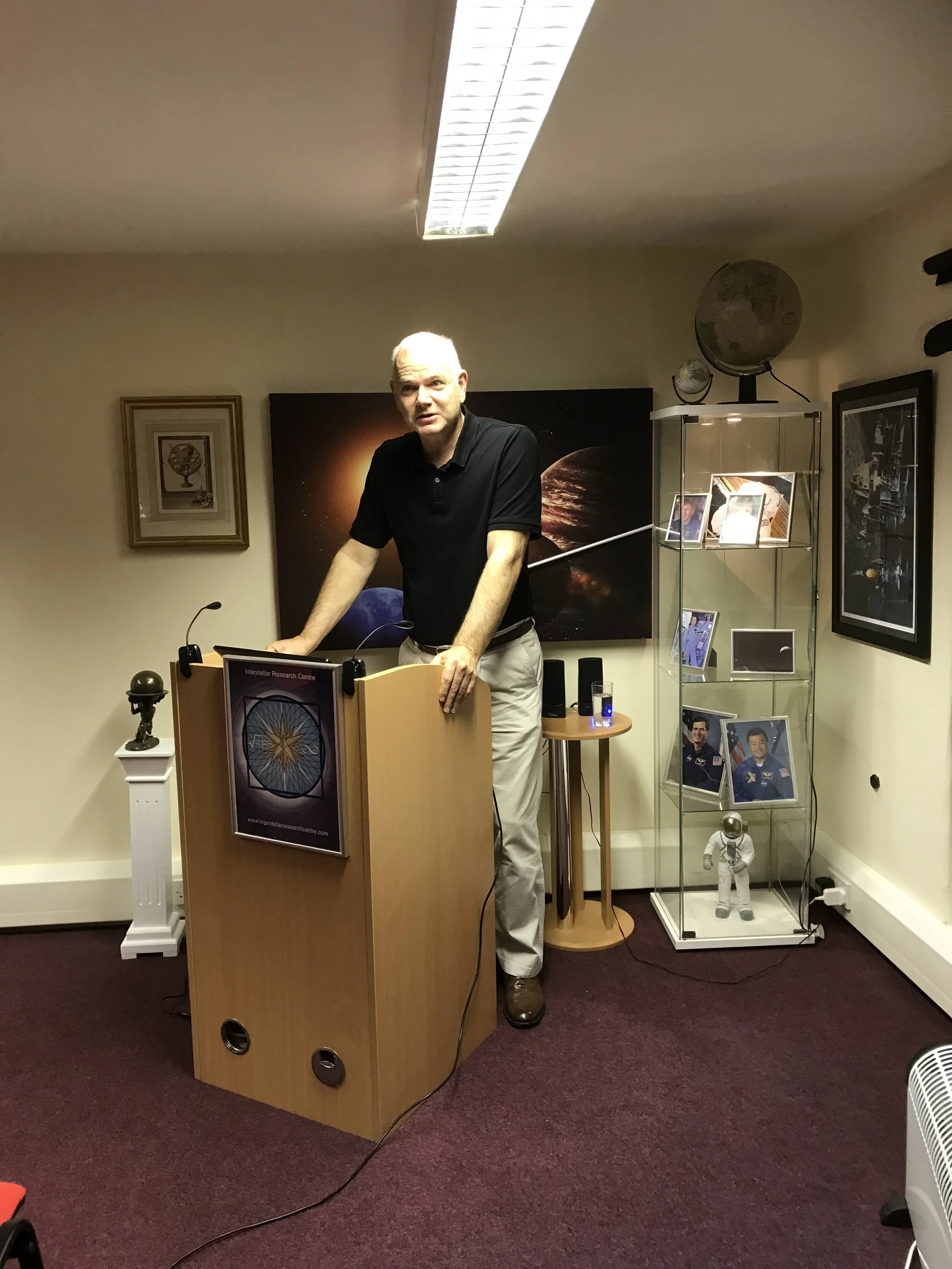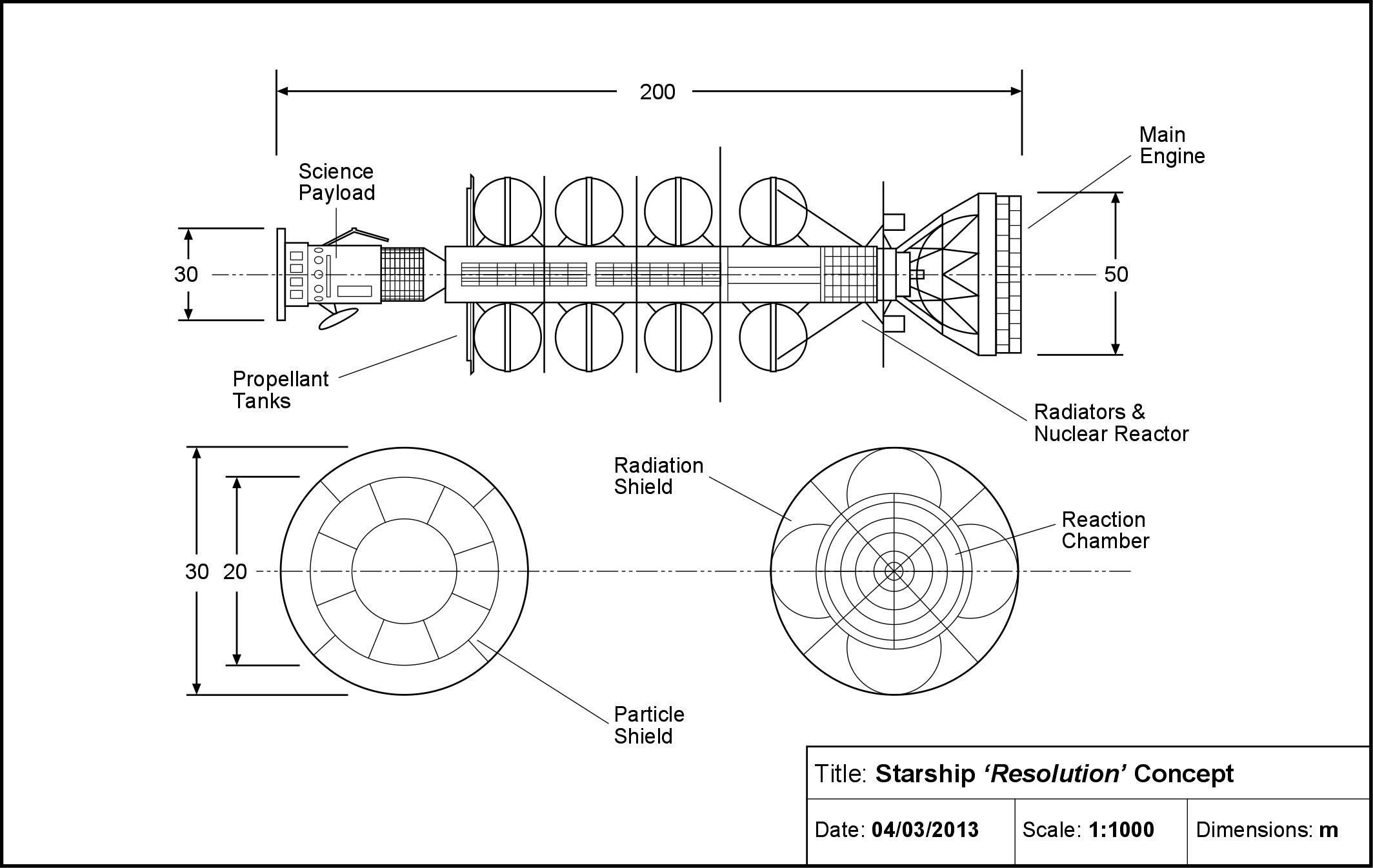The engine would produce a total thrust of 1.99 MN and a Jet power of 9.16 TW. The spacecraft would accelerate for 3.2 years to a distance of 3,747 AU. It would then cruise for a further 93.8 years over a distance of 263,161 AU. It would then decelerate for 2.9 years over a distance of 11,614 AU. It would complete its mission by arriving at its destination target in a total time of 99.95 years, under the 100 years project requirement.
Although Starship Endeavour looked more credible. the addition of the extra engines also created a more complicated radiation environment. In particular, one of the reasons for the original Daedalus team choosing a Deuterium/Helium-3 fuel for their design was because the reaction is aneutronic, and produces protons and helium-4 particles, both of which can be directed magnetically for thrust generation. However, it was pointed out in a paper by R. A. Hyde titled “A Laser Fusion Rocket for Interplanetary Propulsion” (IAF-83-396, 34th IAC, Budapest, October 1983), that Deuterium-Deuterium self-burn reactions within the fuel will lead to a large fraction of both low and high energy neutrons which will reduce the power. Hyde’s calculations showed that self-burn within the fuel will account for about 15% of the reactions, and then producing neutrons either directly or indirectly through Deuterium-Tritium reactions.
He also commented that any neutron capture by Helium-3 will produce Tritium and most of this will burn, even in the outer reaches of the pellet. Further, Hyde stated that at temperatures relevant to DD or DHe3 burn (around 100 keV) there would be copious production of x-rays due to bremsstrahlung radiation. For the Endeavour, the neutrons and x-rays presented a problem, not just for the engine bell, but also for the coupling between each of the engine bells now that there were 5 present in the design.
For some time the Endeavour design looked like it would fail. But two key design improvements saved it. The first is the adoption of a cleaver capsule design to ensure that the high energy neutrons and x-rays were adequately captured; this will be discussed in a later post. The second is the adoption of a radiation shield, based loosely on the Project Icarus Firefly design produced by Michel Lamontagne in earlier work titled “Heat Transfer in Fusion Starship Radiation Shielding Systems” (JBIS, 71, pp.450 - 457, 2018). This work is now being adopted into a redesign of the Endeavour Starship but with a 4-engine bell configuration, and this will be discussed in a later post.
The design of starships is far from easy. It involves many complex physics issues but also engineering issues in order to demonstrate that something is practical. Physics and Engineering are the two first hurdles to move towards a credible design. What comes after that is economics, and certainly the construction of spacecraft as ambitious as Daedalus, Resolution or Endeavour will not come cheaply. What is important, is to be able to justify those costs by the primary mission benefits but also the secondary society benefits. Ultimately, this has to be the test of all new technologies if we are to devote resources to their pursuit. The stars is no exception.







![4-engine Staged Endeavour (progenitor to Pegasus) [M. Lamontagne]](https://images.squarespace-cdn.com/content/v1/5ca7e28c32c85e0001f17bad/1574722073182-Z8X1NMNJ0QYPDRR8ADFN/Endeavour5_Scene+2.jpg)

















